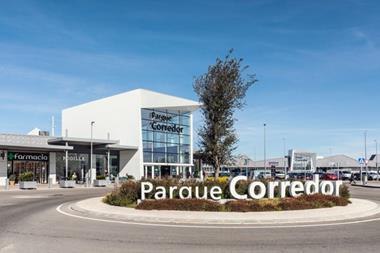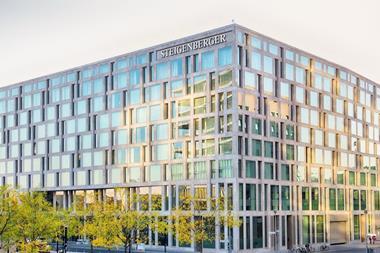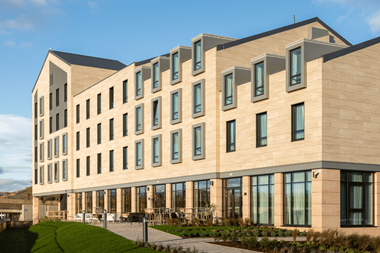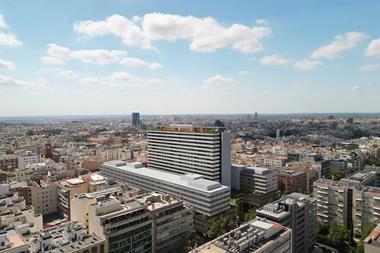The recently issued 2025 Emerging Trends in Real Estate Europe report from PwC and the Urban Land Institute (ULI) suggests that the European real estate industry ‘finally has a landing zone in sight’ after navigating the storm clouds of higher inflation and interest rates for nearly three years.

Moderating macroeconomic markers – supported by central bank efforts to bring down interest rates – have improved business sentiment across Europe going into 2025.
However, concerns persist over the impact of political instability, global conflicts, and US interest rate policies on European real estate. More specific shocks are likely to make recovery in Europe patchy at best, with Central and Eastern Europe (CEE) tipped as one of the harder hit regions.
Geopolitical noise
Indeed, geopolitical factors cast a major shadow over this year’s edition of the Emerging Trends report, which canvassed the views of 1,214 property professionals who completed surveys, were interviewed, or took part in roundtables across Europe during the summer of 2024.
International political instability is named as the major key issue of concern by 85% of respondents, and the report states that ‘geopolitics has figured significantly in recent editions of Emerging Trends in Real Estate Europe but never more prominently than this year’.
While the report was issued prior to the result of the recent US elections, questions around US politics see survey respondents brooding on the possibility of Donald Trump’s return. ‘Over a three-to five-year horizon, geopolitics is the main issue affecting business,’ says a pan-European real estate leader at a major institution.
Another is directly concerned about war in Ukraine and its impact on local capital markets: ‘CEE is completely off the table – there’s much greater focus on the core European countries,’ says the VP of a global investment manager.
Another real estate leader takes a more diplomatic stance, stating that no matter who gets elected in the US, ‘it is just a headline in a way. To focus as a long-term investor, you need to stay away from those headlines and look at the trend lines.’
CEE outlook
Yet staying away from geopolitical noise can be easier said than done. The outlook for CEE is deeply impacted by Trump’s re-election, and not just because the next president has promised a swift resolution to Russia’s attacks on Ukraine.
While Trump’s running mate, JD Vance, is in favour of promptly halting US funding of Ukraine’s defence, other Republican rumours centre around the creation of a demilitarised zone between the two states which is policed by Europe, or the concession of land by Ukraine in return for a ceasefire. All of these solutions could potentially undermine the security outlook for Ukraine’s neighbours, including Moldova and the Baltic States.
Furthermore, a paper published shortly before the election by the European Council on Foreign Relations (ECFR) warns that Trump’s return could also destabilise the Western Balkans. The paper predicts that a Republican administration could actively back Serbian interests, moving away from the neutral stance promoted by the Democrats. This in turn could impact Bosnia’s fragile stability, reviving contentious land swap proposals between Serbia and Kosovo.
All of these factors are reflected in ongoing sluggish transaction volumes for CEE real estate. CBRE data shows that deals in the third quarter of this year were slightly down on the same quarter in 2023 at just €1.6 bn of transactions – dragging deals down by 17% in terms of the trailing 12-month volume.
Much of this is also structural – for example, office trades are down 37% year on year in the region, as the future of work remains under the spotlight: retail deals are similarly down 22% year on year in a climate of economic sluggishness and amidst long-term pressures on physical retail. Hotels, while accounting for just 4% of deals during the quarter, is one of the more brightly performing sectors, seeing a 33% uplift in popularity from investors year-on-year.
The IMF has summarised CEE’s woes as ‘soaring wage costs blunting east Europe’s edge’, which, coupled potentially with manufacturing tariffs imposed by the incoming Trump administration, could slow the region’s business recovery still further.
One or two bright spots persist: Romania has experienced a compression in prime yields by 0.25 bps this year across sectors including offices, retail, industrial and logistics, driven by positive demand for prime product, CBRE reports. And with long-term interest rates continuing to decline, the real estate financing landscape should improve.
Yet the majority of foreign capital will surely wait for Trump’s arrival in 2025 before unveiling major strategies for the region, cognizant of the fact that geopolitical risk factors remain higher than ever.










